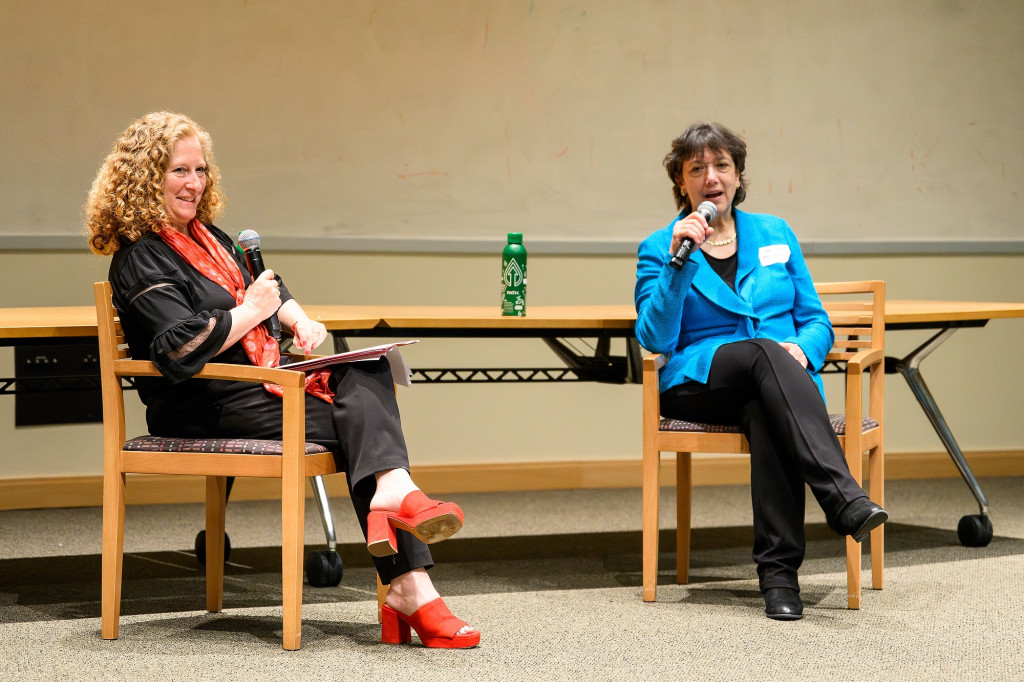04 Jun NIH director’s visit to UW–Madison highlights biomedical research, future opportunities

Chancellor Mnookin and NIH Director Bertagnolli discuss challenges and opportunities for the National Institutes of Health. Photo: Althea Dotzour
As one of the nation’s leading research institutions, the University of Wisconsin–Madison has been at the forefront of countless medical breakthroughs. On Friday, May 31, National Institutes of Health Director Monica Bertagnolli got an up-close view of some of UW’s cutting-edge work to tackle the biggest medical issues of the day, from advances in cancer treatments to bringing research into primary care settings.
Bertagnolli’s trip to campus included meetings with UW researchers and a public conversation with Chancellor Jennifer L. Mnookin, where she discussed NIH funding and new opportunities to improve the nation’s health.
Leading in biohealth innovation
The daylong visit highlighted the university’s groundbreaking work in areas such as theranostics and precision medicine, and Bertagnolli heard how UW–Madison researchers are combining data-driven diagnostics and innovative technologies to develop highly targeted cancer treatments. Zachary Morris, co-director for the Initiative for Theranostics and Particle Therapy, described how new approaches will not only improve patient outcomes, but also enhance business collaborations, ultimately stimulating economic growth.
“The payoff to the state and region is significant,” noted Morris.
UW–Madison has long been a national leader in biohealth and personalized medicine, with strengths in biotechnology, medical physics and medical engineering. Most recently, the university played a key role in Wisconsin’s designation as a Biohealth Regional Technology and Innovation Hub (Tech Hub). UW and its consortium partners are currently awaiting the results of its Phase 2 application, which could unlock an additional $75 million in federal grants.



